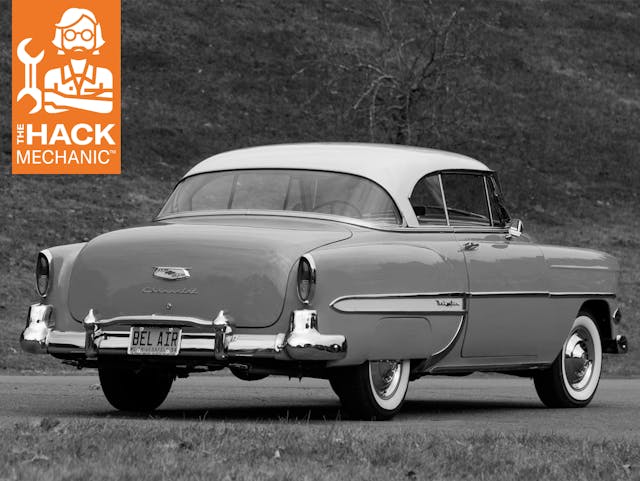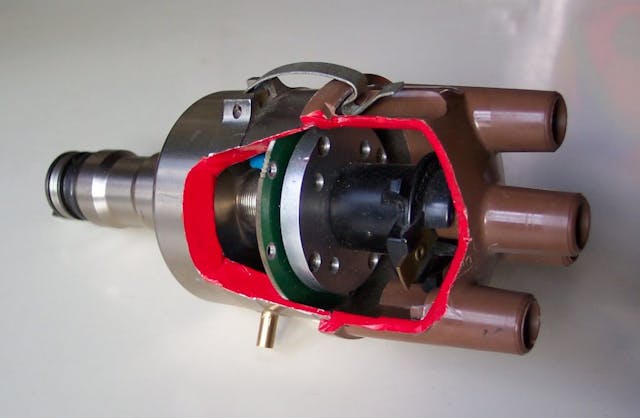Choose your oils wisely: Transmission gears and differential gears have different needs

Tom Marrin writes: I have a 1954 Chevy Bel Air with a three-speed transmission. I recently had the rear axle bearings and seals replaced, along with the torque tube bushing. I have been using MasterPro GL-5 80W-90 or GL-5 85W-140 gear oil in the transmission and in the rear end, but my mechanic just told me not to use it in the transmission. OK, so what oil should I be using in each place?
Tom, your mechanic is correct. Differentials and transmissions typically take different oils, because the types of gears and the metal they’re made from are different. Differentials usually have hypoid gears with curved sliding surfaces that require “Extreme Pressure” (EP) additives to reduce wear. The issue is that the EP additives in hypoid gear oil contain sulfur/phosphorus compounds that attack and corrode “yellow metals” such as brass, bronze, and copper, and the synchros in your manual transmission are made of brass. There’s a bit of a gray area with GL-4 oils, as they contain about half the amount of EP additives as found in GL-5, but many GL-4 gear oils specifically say on the label that they’re recommended for hypoid differentials and non-synchronized manual transmissions. So, 80W-90 or 85W-140 GL-5 is fine for the rear end, but for the transmission, I’d recommend that you buy either generic non-hypoid 90W or 80W-90 gear oil, or oil that’s specifically labeled as “manual transmission fluid.” If you want to go synthetic, check out Red Line MTL.

John Marsh writes: Will changing from points to electronic ignition improve the performance of my 1967 MGB GT? And what’s the difference between electronic ignition and the “123 distributor” I keep hearing about?
John, electronic triggering modules are more of a reliability modification than a performance mod. Points close up over time due to the pitting of the point faces and the wear of the nylon block that rides on the distributor shaft. One day, they won’t open far enough to trigger the coil, and the car will sputter to a halt. The quality of new points and condensers is generally poor, too, so replacing a mechanical ignition with an electronic one improves its reliability. Electronic triggering doesn’t change the advance curve or give you a “hotter spark,” so there are no performance gains. There is, though, a benefit that isn’t talked about: The wearing of points also “wears” the timing. That is, as the point gap closes, the ignition timing retards by about 1 degree of advance per degree of point dwell angle. So, switching to electronic triggering does buy you largely set-and-forget ignition timing. The distributors from 123Ignition are more sophisticated; not only do they have electronic triggering, they have electronic spark advance as well, which replaces the jitter-prone weights and springs with an electronic load map. This should provide smoother running, and the ability to program and optimize the advance curve will likely yield a performance improvement. The cost, though, is about five times that of a triggering module, so that is something to take into consideration as you plan the upgrade from points.


